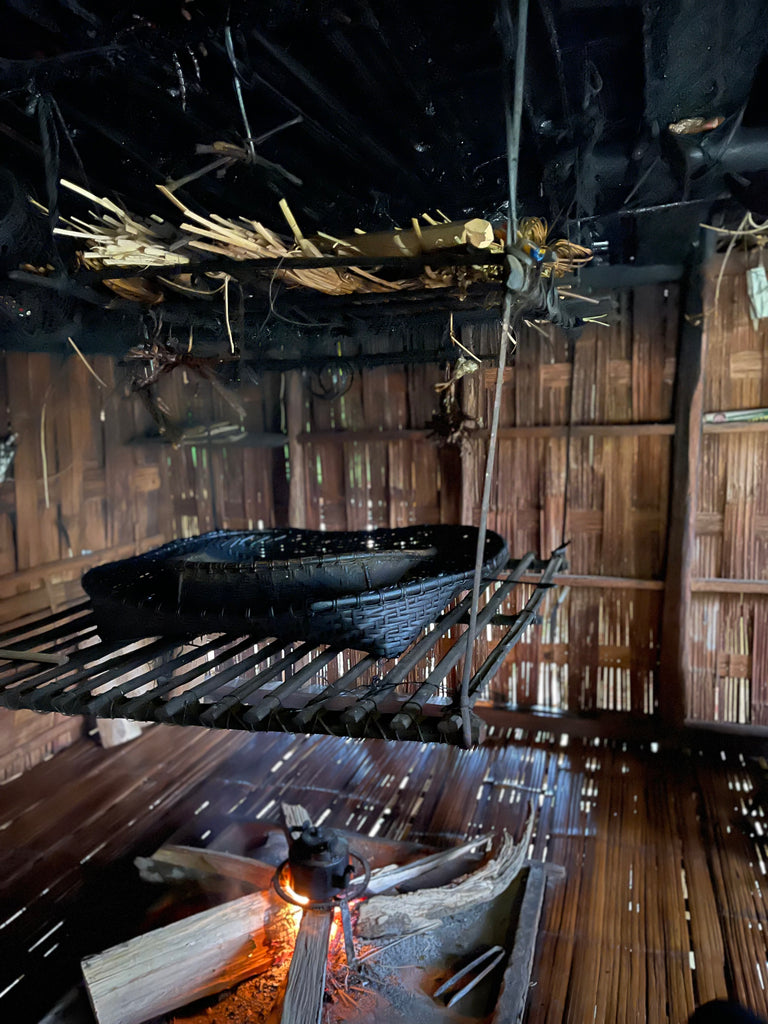No Products in the Cart

Phalap is a traditional tea made by the Singpho and Naga tribes. Some folks from the Naga tribe also call it Khalap. However the meaning is the same. Pha/Kha means "what" and lap means "leaf". The story of the origins of the name goes many years back and was retold to us when we visited Rajesh Singpho. The story is as such- Two brothers were traveling and were really tired and hungry. They began eating a leaf, after which they felt rejuvenated and less tired. When they went to the nearby village they asked the villagers, “what is this leaf”- Pha Lap?” There is another version out there that Phalap or Khalap mean tiredness begone. Phalap or Khalap are essential the same and are tea leaves panroasted like a green tea and then stuffed into a special bamboo that is aged and smoked over a fireplace for months-years.
Shop Now: Naga Khalap Tea
We were fortunate to visit both the Singpho tribe and the Tangsa - Naga tribe. The Singpho tribe migrated to Assam from the Yunnan province where their brethren still live and are called Zingpho. Rajesh Singpho whose house we had tea and a yummy meal at, works extremely hard to keep this traditional tea alive. Previously to make phalap he used leaves from wild tea trees but now uses leaves from cultivated tea plants. However, it was nice to see an extremely tall wild tea tree in his front yard which is proof that although it is thought tea started in China in the Yunnan province, the whole area including North East India was once geographically connected and one region. Over cups of tea, rice beer and yummy homemade food, we learned more about the Singpho tribe and how their traditional tea phalap is made. We saw the beautiful hearth over which the tea is smoked in a swing made of jute.




We then met part of the Tangsa - Naga tribe in a small village in a remote area of Arunachal Pradesh close to the Myanmar border. Our children had a great time playing with the other kids of the village, pigs and goats! Here the chief of the village showed us how he makes Khalap. The Naga tribe folk make Khalap from wild tea trees that they have gotten from the forest and re-planted in their backyard. Each family has about 6-8 wild tea trees and their own unique tea garden.


Khalap is usually made in March when the tea tree has new leaf growth. Leaves are harvested and then roasted in a pan over the fireplace. Then a special type of bamboo is taken and roasted and dried over the fire. The tea leaves are then stuff into the hollow of the bamboo using a metal rod to push pack them tight. After this the bamboo is shaved and an airtight cap is made from the ends. Then the bamboo filled with tea is roasted over the fire once again, and the placed on the special swing on top of the fireplace, where it is smoked and aged from anywhere between few months to many years. The longer the Khalap is aged the more coveted it is. The tribesmen also have crafted special bamboo cups to drink the Khalap in.




Back in Atlanta, we enjoy drinking Khalap using gongfu style of steeping. The traditional way of drinking khalap, is to take a little bit of tea out from the bamboo and placing it in a metal tea kettle with water. The kettle is the placed over the fireplace until the tea boils after which it poured into the bamboo cups.
For us very thoroughly enjoyed meeting the Singpho and Naga tribes and trying phalap and khalap. Similar techniques, different tea makers but the one big difference was that one was made from cultivated tea leaves and the other from wild tea leaves. We also enjoyed talking to the tribes and learning more about their ancestors, their current way of lives and how they are trying to keep traditions alive. Why don't you give our khalap from the Naga Tribe made from wild tea trees a try and let us know what you think ?